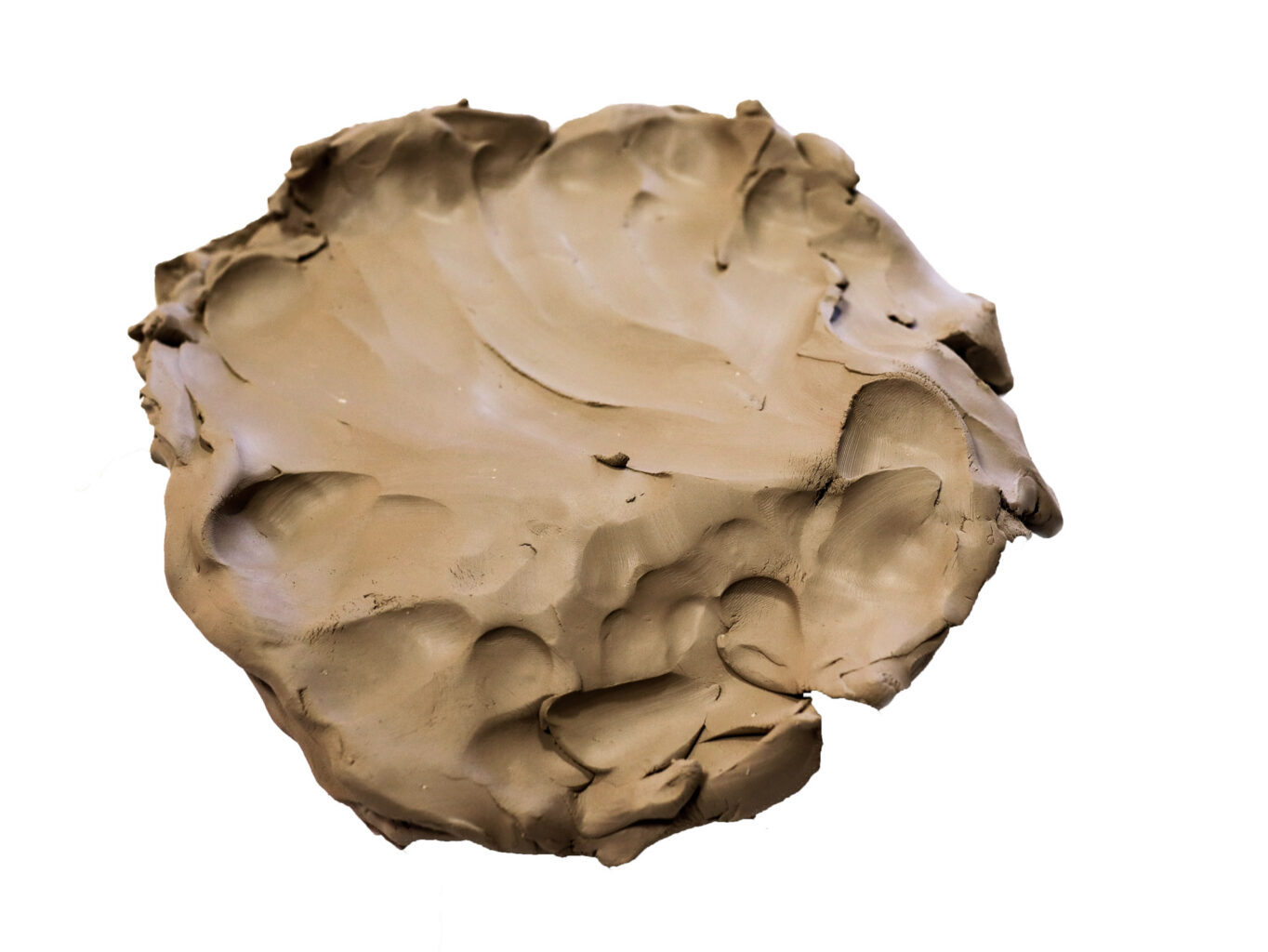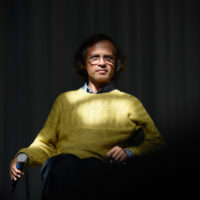A conversation with five art therapists.
Wolfgang Held You work as art therapists, and under Covid conditions, you also had to bring your therapies into an online format. What experiences have you had with it?
Franziska Schmidt von Nell For me, the most striking experience was that the online encounter can create a closer connection faster. You reach a deeper level faster. That’s why we asked ourselves together how this happens and what we have to do to make it happen. Because of course, it is not the case that you start a Zoom conference and immediately all people are completely connected to each other. So: What do I have to bring with me as a therapist, what do I have to do, which questions do I have to ask, and which ones I must not ask under any circumstances? In our working group, we have noticed that in this medium a soul-spiritual connection is demanded and perhaps also promoted.
Simone Gaiss For me, the most central thing was the willingness of the people as a prerequisite for such a process. And then it was very important to me to hand over material differently and to process it in smaller steps under certain circumstances. If there is the will, then the sense of presence among people is actually stronger. In order to do this online, the concern for people is often much more clarified in advance than when they come to therapy.


Silke Speckenmeyer When I work with plastic online with people, I have the impression that they stay with themselves much more strongly. I wouldn’t have thought that at all before. But it is noticeable that even if someone accompanies the process, the I power comes out more clearly. Of course, I prefer classroom lessons, but with clients, I see to this day that they can stay in their own aura. And it is all the more important from my side that I speak very gently because only then will it reach them.
Focus on the Possibilities
Laura Piffaretti I struggled in music for a long time, because of course, I was attached to the ideal listening experience and sound space. Trying out online teaching has allowed me to see that something comes through, but that different qualities are perceived, including from the instruments, than happens during in-person lessons. For me, this has made it less a moral question than a phenomenological one: What happens in one case, what happens in the other? For example, there are instruments where the overtones come out much more, or they are given a clearer meaning. In real space, there is a basic tone that holds, and the overtones spread throughout the room. Online, the basic tone stays with me, but the overtones go to the other. Then I have to see where the basic tone remains. This change in terms of one’s own ideals is not so easy, because we appreciate what is available very much. But it may be about noticing more what this achieves than what it does not. And you always have to notice when something doesn’t work through this digital medium, and then come up with something that is possible.
Esther Böttcher For me, it was very impressive to become aware of how much I perceive. First of all, I became aware that it is possible to be connected to the other spiritually and emotionally and to see the screen only as a reflection surface. Of course, the medium will not bring one forth in their entirety, but it is still effective while reduced. For example, we don’t work on a whole poem, but on a line, a sound, or a syllable. This reduction can suddenly have a very large effect. Another experience: When I speak into a microphone, the other person gets a gift from me. Because especially when you work in a group, the microphones of the others are muted and they are then, when I speak, completely left to their own devices. Acoustically, I can’t notice anything – it remains in the private sphere. And I can’t correct anything as a therapist because I don’t hear anything. I have to enter a space of trust and become aware of it. The fact that this is possible has also strengthened my personal spirituality. The feedback is positive and has shown me: you can either speak flatly into a camera, then it’s just an online meeting, or you can connect to the wider space, and then it’s an experience.

Speckenmeyer What I find very important about what we have all said is that the courage of the therapist is particularly in demand in this situation. It takes a lot of courage to have confidence and to give and allow so that the other person stays completely with themselves, with their own intimate feelings. From this, you come together again and that always means giving away the heart a bit. You have to be able to feel and allow these forces of courage, because of course it could also go wrong, but it often doesn’t go wrong at all!
From imitation to self-activity
Held What did you not succeed in doing or what else did you wake up to?
Schmidt von Nell In speech formation, we work a lot with posture, gestures, movement, etc. The fact that I could not demonstrate these and that the other person could not get into the imitation was at first a hurdle for me. The precise way I stand changes my whole speech formation. But if someone sits crookedly on the ‹other end›, then it won’t work. In my practice, I correct my posture for myself, and usually, the other person follows me in it. This is all impossible due to the limitations of the screen. Initially, I tried to compensate for those two-thirds that usually make up my therapy session, and I explained to people exactly how to hold their hands, etc. But I quickly realized that this was not appropriate. And then I started to create images in which my counterpart enters independently and in which I can assume that they can create a certain tension or posture in him. That’s how I started to think differently. What could previously be passed on by imitation in a face-to-face session, I have to transfer to the soul space, and there I can invite the other. This then physically results in what I need to work on.

Held Can this not be generally assumed for adult education and instead keep imitation in the second seven-year cycle?
Schmidt von Nell In communicative situations, thanks to mirror neurons, we are always a bit in the second seven-year cycle … But yes, I would reinforce my first suggestion: that the online encounter massively strengthens the equality in relationship.
Piffaretti We promote self-responsibility even more. Our challenge is to find the resonant, inner image of the respective patient, so that the necessary posture can be built up by him or her from the inside out. For me, the previously mentioned listening room comes into play again – from my inner listening room, I listen to the other person and seek out their own image, which I then reflect back and upon which they can then build themself up. What we otherwise simply do, directly with each other, is thus raised to a higher level, and I believe that this is very timely.

Speckenmeyer For the plastic design I have to add something else. We work with materials, so now the people who come to me online have to buy ten kilos of clay themselves and set up an area for it at home. I woke up when I tried to find the space in the apartment in preparation for it, and I realized, at the desk, at the kitchen table, that this was not good at all. What we need is a real surface in the room – a 5 by 5-foot tarp on the floor, which people prepare within their four walls. And suddenly an installation is created in one’s own space, and the person who works with me is really the whole person inside the space, as I would always like to have it in the studio. And it does a lot for people to connect with space in such a practical way and actually create a space in their lives where they take care of themselves.
Böttcher Of course, if you have to do your therapy at home, this can also have disadvantages, because there is no exclusivity, you are in an everyday space. And there may be many other influences or children or the partner you actually wanted to talk about in the session. On the other hand, the transfer into everyday life is easier. And to the material, I would like to add: You have to trust the material or the medium absolutely. No matter what I have, it works. I can’t control the application, but I have to trust it. Still, the sound works. And a real challenge is how the session ends. Because ending the session with one click and letting go of the other is much more radical than saying goodbye in person. For sure, this is also a moment of pain.
Schmidt von Nell I would like to say that I had to learn online to grasp the form of time anew. In a therapy session in my practice, I don’t think about the end at the beginning – online I have to include that now.

Piffaretti At the same time, however, when I feel into the background, into the soul-spiritual, my connection with, for example, the students now remains much stronger. That etheric space is always there, but going through the online challenge has amplified my work through this space. My will has strengthened and I now have the feeling that I have slowly learned the language of this space.
Held What are the challenges for the near future, what will you be practicing in the near future?
Piffaretti We imagined that we could also advise other therapists who work online and want to train themselves for it.

Speckenmeyer I’m also interested in finding out how you have to take care of yourself as a therapist if you were in a therapeutic project in the morning, then worked in the studio and did an hour of online therapy in the evening. With all of this movement, I ask about psychological hygiene. And I would like to discuss this with my colleagues here. This also makes it very collegial and approachable if you can also show yourself in your own vulnerability and ask questions.
Gaiss For me, in everything that has now been said, the workshop idea is very strong. And in such a way that the workshop that we have in the visual arts is taken inwards, into an inner workshop of images, thoughts, feelings, and order. This is something that applies both to the patients and to ourselves from a therapeutic perspective, and that connects us with each other. From this, we can grow individually and also keep connecting. In the end, it is no longer important whether this takes place in person or online – it happens, individually and for society.
Böttcher You have to take this step of consciousness inwards, therein lies the workshop character. Going into inner mindfulness is not a small step, even if it seems that way to the outside. This is a step where I can still learn a lot.
The results of the working group for online therapy within the International Coordination of Anthroposophical Art Therapy (ICAAT) in the Medical Section of the Goetheanum are available as a guide at: ICAAT-Projects
This year’s online conference ‹Art & Medicine – Tria Principia – do we speak the same language?› has just begun. On March 26, August 13, and November 5, interested therapists, students, and doctors will come together in three events.
You can access all events at any time at: ICAAT





